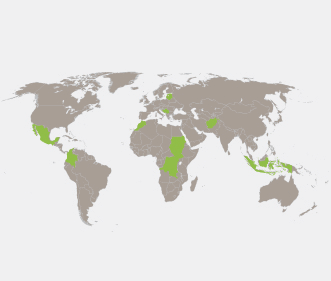With rising interest in community policing as a tool for improving access to justice and involving communities in security provisioning – Lisa Denney and Demalashe Kassaye of the Overseas Development Institute (ODI) conducted an important study to better understand community policing in the Amhara National Regional State of Ethiopia. The study was conducted as part of a broader project called ‘Securing Communities’, which seeks to “map the diversity of community policing practices in a variety of country contexts to understand its various forms and what factors shape them.” It is the first of three planned case studies, the others of which include Timor L’este and Sri Lanka.
The study builds on previous work on the subject, including a background paper and a literature review . The background paper identified several political features responsible for shaping the development of community policing. Such factors include: histories of state formation; evolution of the political system; state-society relations; state presence; experience of conflict or emergency; social cleavages and inequality and; cultures of protection and dispute resolution (1).
Ethiopia was chosen as a case study based on its unique development as a result of several of the above-mentioned features. In the Ethiopian case, state-society relations, the structure of the political system, cultures of dispute resolution and political ideology were the driving forces that shaped this particular model (IV). For example, the pre-existence of customary dispute resolution mechanisms and a culture of “community mobilization” led to rapid implementation and a generally positive reception to community policing (8). On the other hand, the authoritarian tendencies of the state have led to some dangerous uses of the tool, primarily when it comes to the potential for increased surveillance capacities, due to monitoring and reporting functions (20). Furthermore, traditional methods of dispute-resolution have tended to exclude women and girls from decision-making and this has transferred to the current model of community policing.
Overall, the report found that – while relations between the police and communities have improved (17) and there was a general sense of greater personal safety amongst those interviewed (16) – several challenges remain. Among these is the need to train a broader range of actors involved in justice provision on community policing practices in general; and to address particular obstacles, like gender discrimination, through more sensitivity training. The successes of community policing have also been somewhat insulated from components of the formal justice system, particularly the courts, which are still seen as the most corrupt and inaccessible aspect of the Ethiopian judicial system (19). Finally, there is the need for a finer balance between police accountability and crime reduction and surveillance activities (20).
The report’s findings are significant and applicable from a policy-perspective in that it illuminated important considerations when implementing community policing in Ethiopia and other cases. The model had both positive and negative impacts, and as the report reiterates, it is the job of the international community to ‘do no harm’ by strengthening the positive aspects while mitigating the negative (21). Identifying and navigating these complexities can only be done through a careful examination of the broader political context.
Tags: Community Policing, Ethiopia






 Visit the Centre for
Visit the Centre for